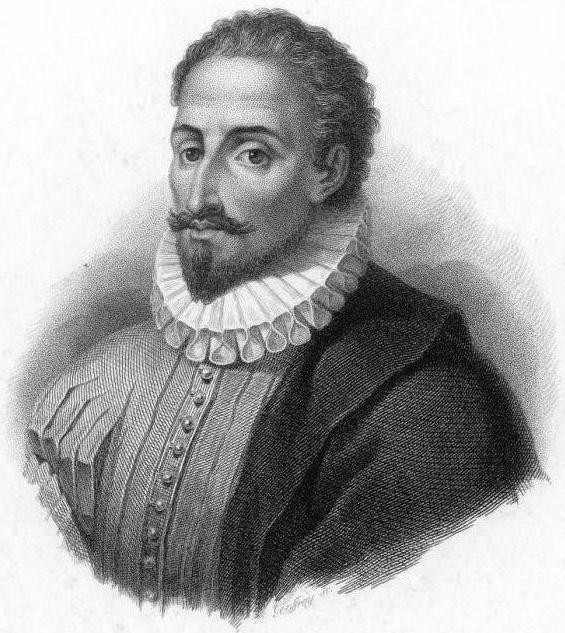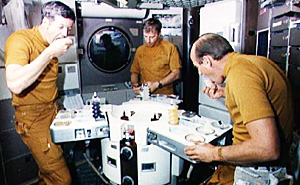
 Виктор Истомин | |
| 1950(1950) | |
 СССР СССР | |
| 170 см | |
| 66 кг | |
| полузащитник, нападающий | |
| завершил карьеру | |
| |
Ви́ктор Исто́мин (1950) — советский футболист, полузащитник и нападающий.
С 1969 по 1971 год играл за донецкий «Шахтёр», в составе которого дебютировал в Высшей лиге СССР, где провёл 1 матч в 1971 году. С 1973 по 1975 год выступал за запорожский «Металлург», сыграл 14 встреч в 1974 году.
Сезон 1975 года провёл в «Кубани», в 16 играх за которую забил 1 гол[1]. В 1977 году выступал за «Кривбасс», принял участие в 12 матчах команды.
www.gpedia.com
1. Россия – Russia, also officially the Russian Federation, is a country in Eurasia. The European western part of the country is more populated and urbanised than the eastern. Russias capital Moscow is one of the largest cities in the world, other urban centers include Saint Petersburg, Novosibirsk, Yekaterinburg, Nizhny Novgorod. Extending across the entirety of Northern Asia and much of Eastern Europe, Russia spans eleven time zones and incorporates a range of environments. It shares maritime borders with Japan by the Sea of Okhotsk, the East Slavs emerged as a recognizable group in Europe between the 3rd and 8th centuries AD. Founded and ruled by a Varangian warrior elite and their descendants, in 988 it adopted Orthodox Christianity from the Byzantine Empire, beginning the synthesis of Byzantine and Slavic cultures that defined Russian culture for the next millennium. Rus ultimately disintegrated into a number of states, most of the Rus lands were overrun by the Mongol invasion. The Soviet Union played a role in the Allied victory in World War II. The Soviet era saw some of the most significant technological achievements of the 20th century, including the worlds first human-made satellite and the launching of the first humans in space. By the end of 1990, the Soviet Union had the second largest economy, largest standing military in the world. It is governed as a federal semi-presidential republic, the Russian economy ranks as the twelfth largest by nominal GDP and sixth largest by purchasing power parity in 2015. Russias extensive mineral and energy resources are the largest such reserves in the world, making it one of the producers of oil. The country is one of the five recognized nuclear weapons states and possesses the largest stockpile of weapons of mass destruction, Russia is a great power as well as a regional power and has been characterised as a potential superpower. The name Russia is derived from Rus, a state populated mostly by the East Slavs. However, this name became more prominent in the later history, and the country typically was called by its inhabitants Русская Земля. In order to distinguish this state from other states derived from it, it is denoted as Kievan Rus by modern historiography, an old Latin version of the name Rus was Ruthenia, mostly applied to the western and southern regions of Rus that were adjacent to Catholic Europe. The current name of the country, Россия, comes from the Byzantine Greek designation of the Kievan Rus, the standard way to refer to citizens of Russia is Russians in English and rossiyane in Russian. There are two Russian words which are translated into English as Russians
2. Содружество Независимых Государств – The Commonwealth of Independent States, also called the Russian Commonwealth, is a regional organization formed during the dissolution of the Soviet Union. Nine out of the 15 former Soviet Republics are member states, Georgia withdrew its membership in 2008, while the Baltic states chose not to participate. The CIS has few supranational powers but aims to be more than a purely symbolic organization, nominally possessing coordinating powers in the realms of trade, finance, lawmaking and it has also promoted cooperation on cross-border crime prevention. Furthermore, eight of the nine CIS member states participate in the CIS Free Trade Area, three organizations are under the overview of the CIS, namely the Collective Security Treaty Organization, the Eurasian Economic Union, and the Union State. While the first and the second are military and economic alliances, in March 1991, Mikhail Gorbachev, the president of the Soviet Union, proposed a federation by holding a referendum to preserve the Union as the Union of Sovereign States. The new treaty signing never happened as the Communist Party hardliners staged a coup in August that year. Following the events of August, the republics had declared their independence fearing another coup, at the same time they announced that the new alliance would be open to all republics of the former Soviet Union, and to other nations sharing the same goals. The CIS charter stated that all the members were sovereign and independent nations, Georgia joined two years later, in December 1993. At this point,12 of the 15 former Soviet Republics participated in the CIS, the three Baltic states did not, reflecting their governments view that the post-1940 Soviet occupation of their territory was illegitimate. In May 2009, Armenia, Azerbaijan, Belarus, Georgia, Moldova, and Ukraine joined the Eastern Partnership, there are nine full member states of the Commonwealth of Independent States. The Creation Agreement remained the main constituent document of the CIS until January 1993, the charter formalised the concept of membership, a member country is defined as a country that ratifies the CIS Charter. Turkmenistan has not ratified the charter and changed its CIS standing to associate member as of 26 August 2005 in order to be consistent with its UN-recognised international neutrality status, thus it does not regard itself as a member of the CIS. In 1993 Ukraine became an Associate Member of CIS, following the 2014 parliamentary election, a new bill to denounce the CIS agreement was introduced. In September 2015 the Ukrainian Ministry of Foreign Affairs confirmed Ukraine will continue taking part in CIS on a selective basis, since that month Ukraine has had no representatives in the CIS Executive Committee building. Since its inception, one of the goals of the CIS has been to provide a forum for discussing issues related to the social. To achieve this goal member states have agreed to promote and protect human rights, even before the 1995 human rights treaty, the Charter of the CIS that was adopted in 1991 created, in article 33, a Human Rights Commission sitting in Minsk, Belarus. This was confirmed by decision of the Council of Heads of States of the CIS in 1993, in 1995, the CIS adopted a human rights treaty that includes civil and political as well as social and economic human rights. This treaty entered force in 1998
3. Килограмм – The kilogram or kilogramme is the base unit of mass in the International System of Units and is defined as being equal to the mass of the International Prototype of the Kilogram. The avoirdupois pound, used in both the imperial and US customary systems, is defined as exactly 0.45359237 kg, making one kilogram approximately equal to 2.2046 avoirdupois pounds. Other traditional units of weight and mass around the world are also defined in terms of the kilogram, the gram, 1/1000 of a kilogram, was provisionally defined in 1795 as the mass of one cubic centimeter of water at the melting point of ice. The final kilogram, manufactured as a prototype in 1799 and from which the IPK was derived in 1875, had an equal to the mass of 1 dm3 of water at its maximum density. The kilogram is the only SI base unit with an SI prefix as part of its name and it is also the only SI unit that is still directly defined by an artifact rather than a fundamental physical property that can be reproduced in different laboratories. Three other base units and 17 derived units in the SI system are defined relative to the kilogram, only 8 other units do not require the kilogram in their definition, temperature, time and frequency, length, and angle. At its 2011 meeting, the CGPM agreed in principle that the kilogram should be redefined in terms of the Planck constant, the decision was originally deferred until 2014, in 2014 it was deferred again until the next meeting. There are currently several different proposals for the redefinition, these are described in the Proposed Future Definitions section below, the International Prototype Kilogram is rarely used or handled. In the decree of 1795, the term gramme thus replaced gravet, the French spelling was adopted in the United Kingdom when the word was used for the first time in English in 1797, with the spelling kilogram being adopted in the United States. In the United Kingdom both spellings are used, with kilogram having become by far the more common, UK law regulating the units to be used when trading by weight or measure does not prevent the use of either spelling. In the 19th century the French word kilo, a shortening of kilogramme, was imported into the English language where it has used to mean both kilogram and kilometer. In 1935 this was adopted by the IEC as the Giorgi system, now known as MKS system. In 1948 the CGPM commissioned the CIPM to make recommendations for a practical system of units of measurement. This led to the launch of SI in 1960 and the subsequent publication of the SI Brochure, the kilogram is a unit of mass, a property which corresponds to the common perception of how heavy an object is. Mass is a property, that is, it is related to the tendency of an object at rest to remain at rest, or if in motion to remain in motion at a constant velocity. Accordingly, for astronauts in microgravity, no effort is required to hold objects off the cabin floor, they are weightless. However, since objects in microgravity still retain their mass and inertia, the ratio of the force of gravity on the two objects, measured by the scale, is equal to the ratio of their masses. On April 7,1795, the gram was decreed in France to be the weight of a volume of pure water equal to the cube of the hundredth part of the metre
4. Полузащитник (футбол) – A midfielder is an association football position. Midfielders are generally positioned on the field between their teams defenders and forwards, some midfielders play a disciplined defensive role, breaking up attacks, and are otherwise known as defensive midfielders. Others blur the boundaries, being mobile and efficient in passing, they are commonly referred to as deep-lying midfielders, play-makers, box-to-box. The number of midfielders on a team and their assigned roles depends on the teams formation, most managers assign at least one midfielder to disrupt the opposing teams attacks, while others may be tasked with creating goals, or have equal responsibilities between attack and defence. Midfielders are the players who typically travel the greatest distance during a match, central or centre midfielders are players whose role is divided roughly equally between attack and defence. When the opposing team has the ball, a midfielder may drop back to protect the goal or move forward. The 4–3–3 and 4–5–1 formations each use three central midfielders, the 4−4−2 formation may use two central midfielders, and in the 4–2–3–1 formation one of the two deeper midfielders may be a central midfielder. The term box-to-box midfielder refers to central midfielders who have abilities and are skilled at both defending and attacking. These players can track back to their own box to make tackles and block shots. A good box-to-box midfielder needs good passing, vision, control, stamina, tackling and marking in defence, left and right midfielders have a role balanced between attack and defence, similar to that of central midfielders, but they are positioned closer to the touchlines of the pitch. They may be asked to cross the ball into the penalty area to make scoring chances for their teammates. Common modern formations that include left and right midfielders are the 4−4−2, the 4−4−1−1, the 4–2–3–1, a notable example of a right midfielder is David Beckham. Defensive midfielders are players who focus on protecting their teams goal. These players may defend a zone in front of their teams defence, defensive midfielders may also move to the full-back or centre-back positions if those players move forward to join in an attack. Sergio Busquets described his attitude, The coach knows that I am an obedient player who likes to help out and if I have to run to the wing to cover someones position, great. A good defensive midfielder needs good positional awareness, anticipation of play, marking, tackling, interceptions, passing and great stamina. A holding or deep-lying midfielder stays close to their teams defence, a player in this role will try to protect their goal by disrupting the opponents attacking moves and stopping long shots on the goal. The holding midfielder may also have responsibilities when their team has the ball and this player will make mostly short and simple passes to more attacking members of their team but may try some more difficult passes depending on the teams strategy
wikivisually.com
| В этой биографической статье о человеке из России или страны СНГ не указано отчество. Вы можете помочь проекту, добавив отчество в текст статьи и переименовав её соответственно. |
Виктор Истомин | |
| 1950(1950) | |
| СССР | |
| 170 см | |
| полузащитник, нападающий | |
| завершил карьеру | |
| |
Ви́ктор Исто́мин (1950) — советский футболист, полузащитник и нападающий.
С 1969 по 1971 год играл за донецкий «Шахтёр», в составе которого дебютировал в Высшей лиге СССР, где провёл 1 матч в 1971 году. С 1973 по 1975 год выступал за запорожский «Металлург», сыграл 14 встреч в 1974 году.
Сезон 1975 года провёл в «Кубани», в 16 играх за которую забил 1 гол[1]. В 1977 году выступал за «Кривбасс», принял участие в 12 матчах команды.
ru-wiki.ru
Материал из Википедии — свободной энциклопедии
 | В этой биографической статье о человеке из России или страны СНГ не указано отчество. Вы можете помочь проекту, добавив отчество в текст статьи и переименовав её соответственно. |
 Виктор Истомин | |
| 1950(1950) | |
 СССР СССР | |
| 170 см | |
| 66 кг | |
| полузащитник, нападающий | |
| завершил карьеру | |
| |
Ви́ктор Исто́мин (1950) — советский футболист, полузащитник и нападающий.
С 1969 по 1971 год играл за донецкий «Шахтёр», в составе которого дебютировал в Высшей лиге СССР, где провёл 1 матч в 1971 году. С 1973 по 1975 год выступал за запорожский «Металлург», сыграл 14 встреч в 1974 году.
Сезон 1975 года провёл в «Кубани», в 16 играх за которую забил 1 гол[1]. В 1977 году выступал за «Кривбасс», принял участие в 12 матчах команды.
proxy7.turboyum.appspot.com










